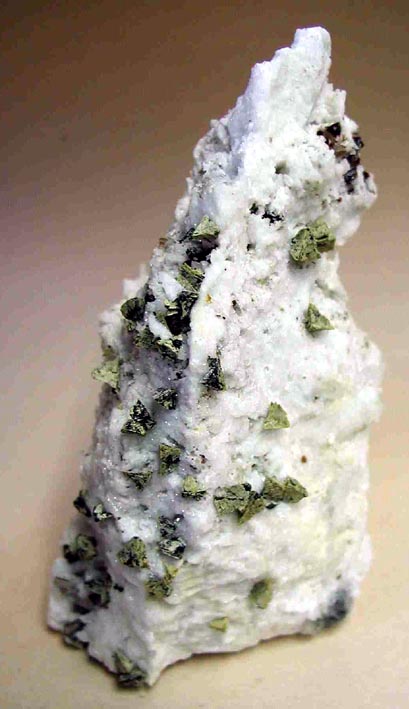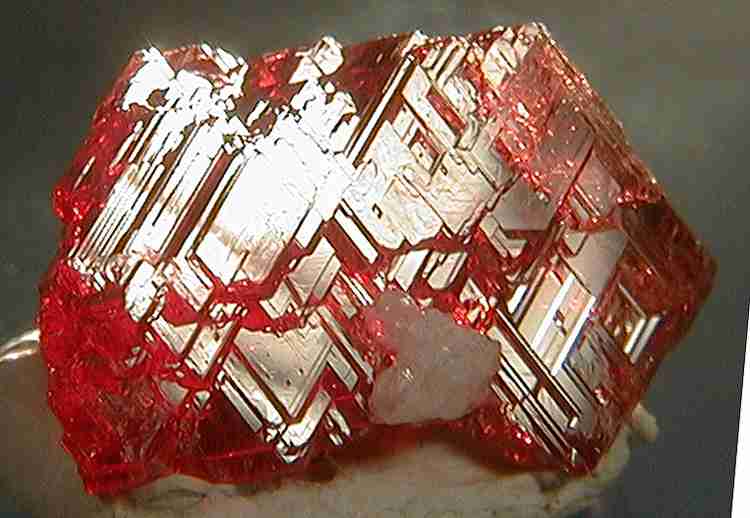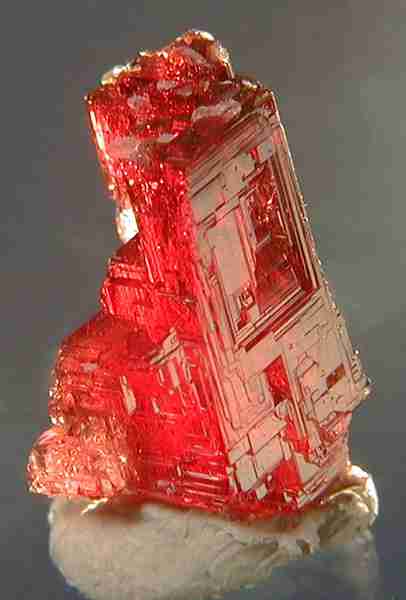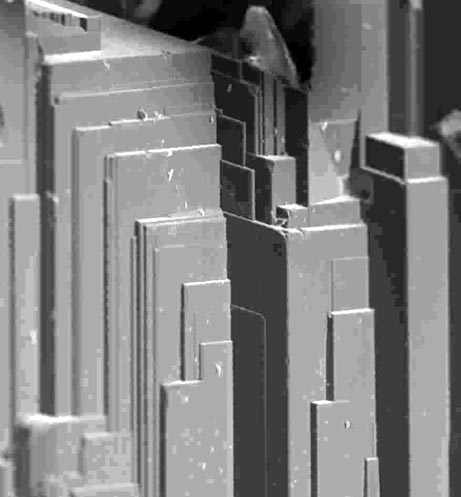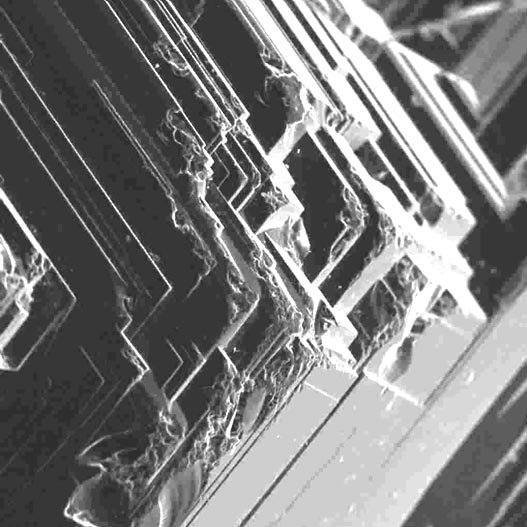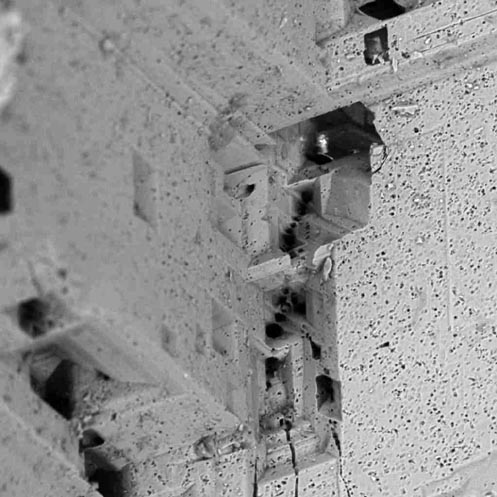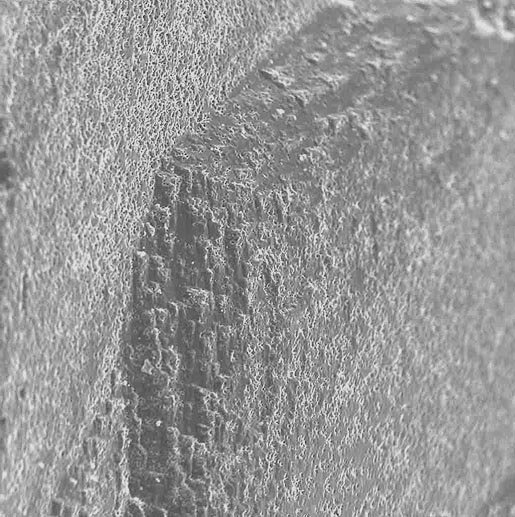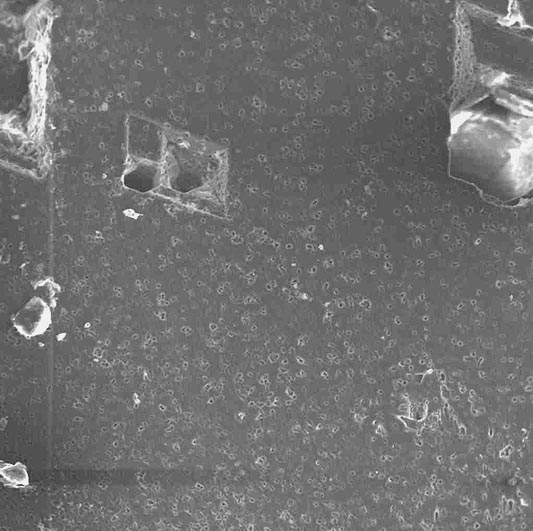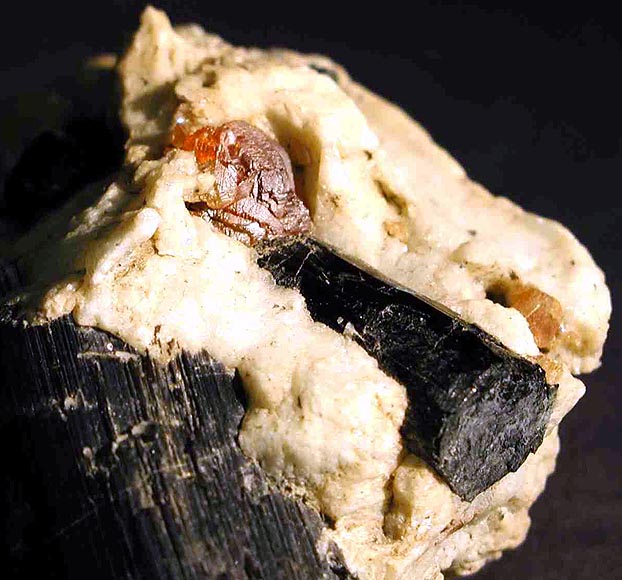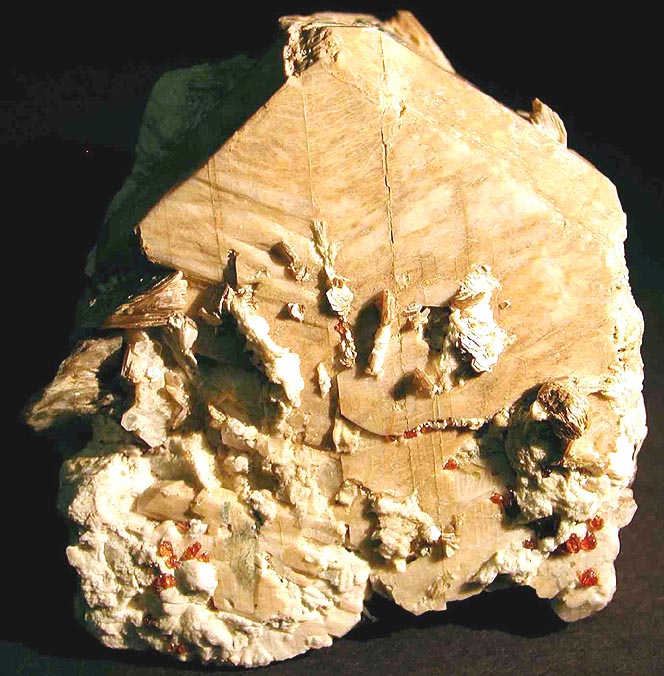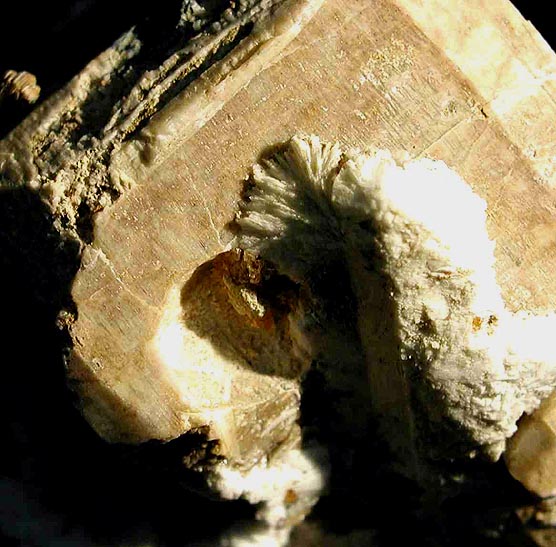| David London School of Geology & Geophysics University of Oklahoma Norman, OK 73019 dlondon@ou.edu |
||||||||||||||||||||||||||||||||||
This article is in response to two unrelated events that led up to a common question in pegmatite mineralogy. It began with the early news from Luiz Menezes (Luiz Menezes Minerals) of a find of helvite and spessartine garnet on albite: Hello David: This is to inform you and the Pegmatite Interest Group about an outstanding pegmatite find in Brazil: in a sub-horizontal pegmatite called Navegador mine, in Conselehiro Pena, Minas Gerais, a huge cavity measuring (after dug ) about 10 x 10 x 3 meters, several tons of large ( up to 2 to 3 tons) high-grade quartz crystals were found, together with several tens of tons of albite (everything collapsed inside the pocket), but the most interesting is that inside the albite there were more than 100 kg of etched spessartite crystals, very bright and nice red, measuring up to 10 cm, and over the cleavelandite plates, and also over the quartz crystals, there were helvite crystals measuring 5 to 8 mm, yellow to olive-green; inside most of the helvites there is manganese oxyde. About the time I acquired some of this material from Luiz (Fig. 1), John S. White (Kustos) posed to me a question of longstanding interest to him, and one that he and I have discussed previously in the context of tourmaline, beryl, and spodumene: are the surfaces and habits of the spessartine crystals from Navegador the result of etching or of growth? Figures 2 and 3, from Scott Werschky (Miner's Lunchbox), show typical specimens. Frank Melanson (Hawthorneden) provided me with some small but complete crystals for analysis. If the garnets preserve a growth stratigraphy (i.e., internal zonation) in the form of a dodecahedron, then I would expect that zonation to intersect the surfaces of the crystals obliquely, as the shapes of the garnets are highly asymmetrical. On the other hand, if chemical zonation is parallel to the existing surfaces, then the present surfaces must be growth features. Because the late stages of pegmatite evolution commonly record an influx of Fe and Ca from external fluid sources, I expected to see an increase in the almandine and grossular components of the garnets if they grew in response to a change in fluid chemistry. Figures 4-11 are secondary electron (SE) and backscattered electron (BSE) images of the surfaces of two garnets, one (Figs. 4 - 6, designated shiny) that exhibits smooth, shiny faces under low optical magnification, and another (Figs. 7 - 11, designated dull) that is dull under the same low optical magnification. Faces of the shiny garnet are smooth to the level of normal SEM magnification and edges are sharp. The corners of numerous edges are pitted and some appeared to have been chipped off, but otherwise most features were perfectly intact. The dull garnet showed abundant, rounded pits at all scales of magnification that are characteristic of solution etching. The morphologies of some apparent pits approached those of "negative crystal" forms, which may be significant in the interpretation of the garnet surfaces. Polished sections through two crystals showed no discernable mass contrast by BSE, and energy-dispersive x-ray analysis revealed no compositional variability within the analytical uncertainty; in other words, the garnets are completely homogeneous from cores to rims. The potentially definitive information provided by zonation, therefore, is absent. In our study of the Little Three pegmatite, Ramona, California (Morgan and London, 1999), we also observed that spessartine garnets were exceedingly homogeneous, especially the large orange garnets from miarolitic cavities. Euhedral dodecahedral garnets from the Little Three have been rare; most garnet crystals are irregular in shape, with sharp and shiny {110} stepped faces, as in the samples from Navegador. Figures 12-14 show two Little Three samples that may address the original question of the spessartines from Navegador. These two samples possess garnet molds with sharp and complete dodecahedral forms. Both molds contain relicts of spessartine, and garnets in both exhibit the irregular shape but shiny {110} faces and sharp, stepped edges that are similar to those from the Navegador mine. My suggestion, then, is that the gross morphologic features of garnets from both localities arise from etching. In some respects, the homogeneity of the garnets, especially those from miarolitic cavities, is more surprising and enigmatic than the crystal forms. Garnet faithfully records changes in pressure, temperature, and growth medium via zonation stemming from solid solutions in the A2+ and B3+ sites. The miarolitic stage of pegmatites is one in which originally closed chemical systems become open to fluids from other regions of consolidated pegmatite, and from host rocks. Tourmaline, another phase noted for its chemical zonation, does record these fluctuations, as do a few others (e.g., beryl, apatite). If the smooth, stepped {110} forms with shiny faces are the products of re-growth, then the fluid composition and conditions that generated the final garnet rims (after etching) must have been identical to the original pocket chemistry a highly unlikely scenario in the late stages of pocket crystallization in pegmatites. What is problematic about an origin of the {110} faces by etching is evident in the electron images of the dull garnet. This is what etching normally looks like in dissolution experiments, and it is absent on the shiny garnets, which appear to be more common at the Navegador mine. In experiments, dissolution produces rounded etch pits as seen in these images, however, when the mineral and fluid are far from equilibrium and reaction is rapid. Given time and proper conditions, irregular crystal surfaces do tend to re-heal by local redistribution of solute. This is well known from the behavior of secondary aqueous inclusions along fractures: as fracture surfaces heal by "necking down", inclusions progressively adopt the regular polyhedral forms of the host phase (e.g., Roedder, 1984). The analogy to the garnet case is not perfect for the reasons given above - the process entails precipitation along the surfaces, and that should produce a garnet of different composition. I suggest, then, that the {110} faces became shiny and flat by dissolution as the process slowed down, and the pocket contents approached a steady-state near equilibrium with the surround fluids present in the host rocks. Such a scenario would post-date the final crystallization in the pockets (or at least the garent), which might explain why garnet molds from the Little Three mine are free of subsequent mineral deposits. Acknowledgments Thanks to George Morgan for the EM images and analyses. REFERENCES Morgan, G.B., VI and London, D. (1989) Experimental reactions of amphibolite with boron-bearing aqueous fluids at 200 MPa: Implications for tourmaline stability and partial melting in mafic rocks. Contributions to Mineralogy and Petrology, 102, 281-297. Morgan, G.B. VI and London, D. (1999) Crystallization of the Little Three layered pegmatite-aplite dike, Ramona District, California. Contributions to Mineralogy and Petrology, 136, 310-330. Roedder, E. (1984) Fluid Inclusions. Mineralogical Society of America Reviews in Mineralogy (Ribbe, P.H., series editor), 12, 644 p. FIGURES
|
||||||||||||||||||||||||||||||||||
